Waterflood and EOR
Oilfield waterflood and EOR applications in injectors and producers.
Water is often used in oilfield applications to push additional oil out of a reservoir rock. This is done by injecting water down an injection well and into a geologic rock that contains crude oil. The injected water sweeps oil out of the rock pores and to production wells, where the oil is lifted to the surface and sold. The water is recycled and re-injected. The rock in not homogeneous and the water will find the easiest path between the injector and producer. As the waterflood matures, less oil is recovered and more water is produced until the project is no longer economic.
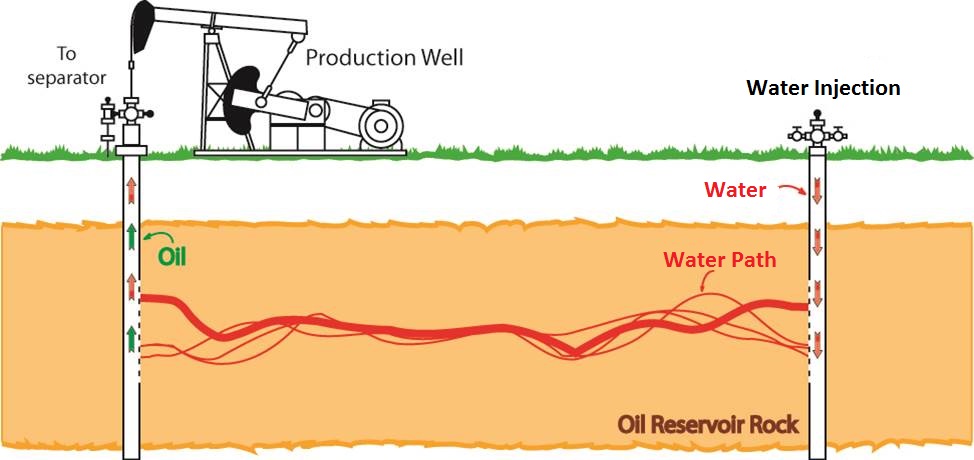 Click here for a larger view. (Multiple SPI treatment option - No Treatment)
Click here for a larger view. (Multiple SPI treatment option - No Treatment)
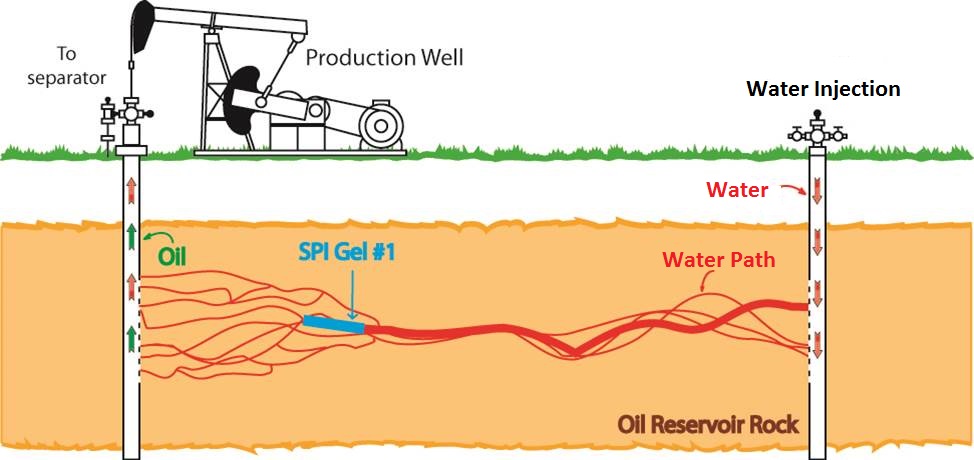 Click here for a larger view. (Multiple SPI treatment option - One Treatment)
Click here for a larger view. (Multiple SPI treatment option - One Treatment)
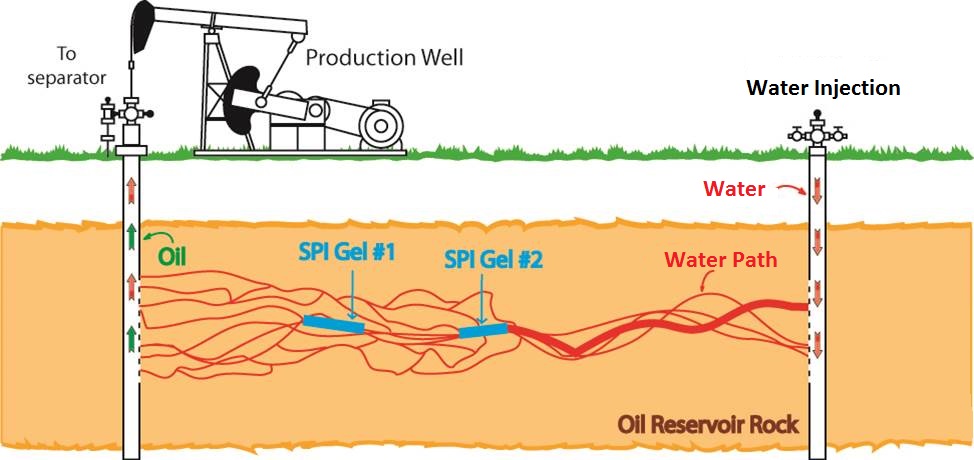 Click here for a larger view. (Multiple SPI treatment option - Two Treatments)
Click here for a larger view. (Multiple SPI treatment option - Two Treatments)
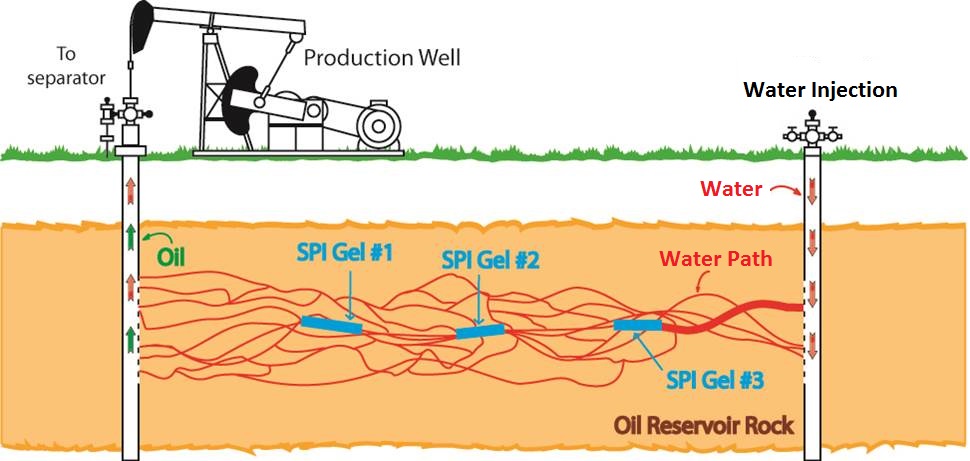 Click here for a larger view. (Multiple SPI treatment option - Three Treatments)
Click here for a larger view. (Multiple SPI treatment option - Three Treatments)
After waterflooding, a variety of chemical and gas methods (polymers, ASP, surfactants, nitrogen, CO2, etc...)can be injected (called Enhanced Oil Recovery, or EOR) to recovery additional oil. These costly injectants cannot reach high levels of recycling as that can end the project. SPI gels with internal initiators can be used in both waterfloods and EOR projects to reduce cycling of injectants, improve conformance of the flood and reduce operating costs.
SPI Gels with internal initiators have been tested in waterfloods during two Stripper Well Consortium (SWC) and one Oklahoma Center for the Advancement of Science and Technology (OCAST) funded projects. Those past treatment volumes were limited to very small volumes and were kept close to the injectors due to internal initiator limitations on gel reaction times at the higher concentrations. However, with SPI’s new class of initiators longer gel times (days) and treatments methods are now possible, allowing for higher SPI concentrations (stronger gels) and larger volumes (10,000+ bbls). Trouble (perforated or open-hole) thief zones can also be fully sealed off, if needed.
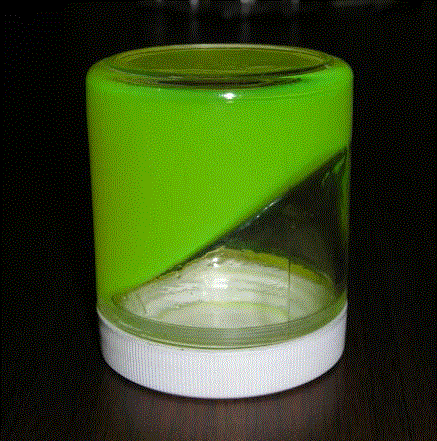
In addition, these new class of internal initiators can be tested for US Environmental Protection Agency (EPA), European and other association rating for offshore applications. Contact us for the specific certifications that are required in your areas.
Since every reservoir rock and well is different and unique, please contact us for a SPI Treatment design for your field.